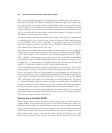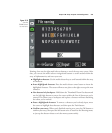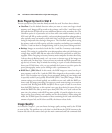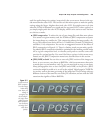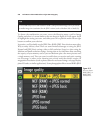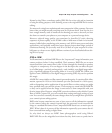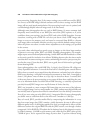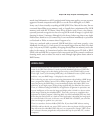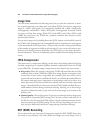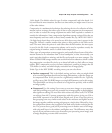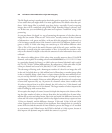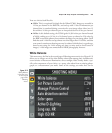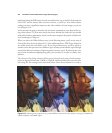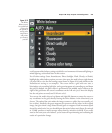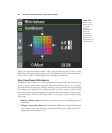Image Size
The next menu command in the Shooting menu lets you select the resolution, or num-
ber of pixels captured as you shoot with your Nikon D7000. Your choices range from
Large (L—4928 × 3264 pixels, 16.1 megapixels), Medium (M—3696 × 2448 pixels,
9.0 megapixels), and Small (S—2464 × 1632 pixels, 4.0 megapixels). Personally, I think
it’s pretty cool that after using a Nikon D70 (with 6MP) and a Nikon D200 (with
10MP) for several years, my D7000 has a medium resolution that exceeds or nearly
matches both of them.
You can select image sizes by holding down the QUAL button on the back left panel of
the D7000, while spinning the sub-command dial until the resolution you want appears
on the monochrome LCD status screen. (This provides you with a status panel estimate
of the number of exposures available at each setting.) Or, you can use this menu to per-
form the task (usually because you find the color LCD easier to view under the partic-
ular circumstances). There are no additional options available from the Image Size menu
screen.
JPEG Compression
This menu entry is a simple one, offering you the choice of specifying either Size Priority
(variable compression) or Optimal Quality (minimal compression) when the D7000
creates JPEG files. I’ll explain image compression in more detail in the next section.
■ Size priority. When this option is selected, the D7000 will create files that are fairly
uniformly sized at about 7.8MB for a JPEG Fine image. Because some photos have
content that is more easily compressible (for example, plain areas of sky can be
squeezed down more than areas filled with detail), to maintain the standard file size
the camera must apply more compression to some images, and less to others. As a
result, there may be a barely noticeable loss of detail in the more heavily compressed
images. The uniform file size also means that the D7000’s buffer will hold the max-
imum number of shots during continuous shooting, allowing you to shoot longer
sequences without the need to pause and wait for some images to be written to the
memory card.
■ Optimal quality. Choose this option if you want to maintain the best image qual-
ity possible at a particular JPEG setting (Fine, Normal, or Basic) and don’t care if
the file size varies. Because the D7000 will use only the minimum amount of com-
pression required at each JPEG setting, file size will vary depending on scene con-
tent, and your buffer may hold fewer images during continuous shooting.
NEF (RAW) Recording
You can choose the type (amount) of compression applied to NEF (RAW) files as they
are stored on your memory card, and whether the images are stored using 12-bit or
David Busch’s Nikon D7000 Guide to Digital SLR Photography240



